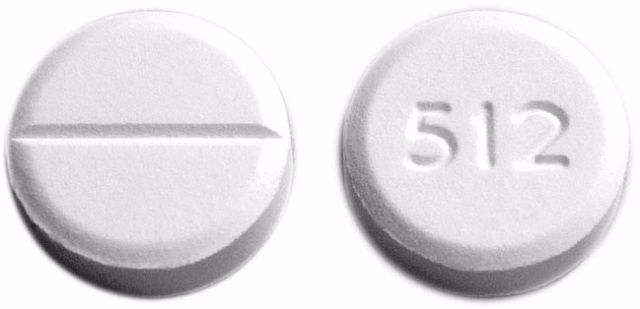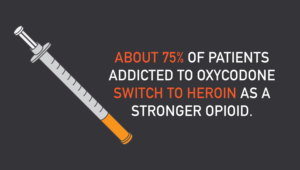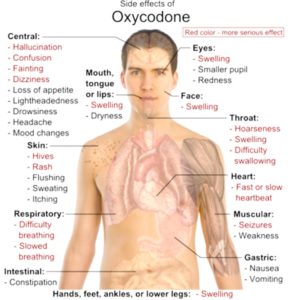Aug 28, 2011 | By Tim Stoddart
What is Oxycodone? – How Does It Effect The Body and Brain?
Painkiller Addiction
Street Names Associated with Oxycodone
Oxycontin, Oxy, Oxy 80’s, Kickers, Blue, Hillbilly Heroin, Killers
Oxycodone: A Synopsis
Oxycodone is a semi-synthetic opiate and the active ingredient in a number of prescription pain relief medications such as Oxycontin, Tylox, Percocet and Percodan.
Drugs that contain oxycodone as its’ active ingredient are only meant to be used for short-term pain relief from medical procedures as well as for managing pain associated with cancer and arthritis. At the time of formation, oxycodone was a a godsend for people in severe, debilitating pain like neurological degeneration, or those who suffered from end-stage cancer or similar illnesses. Despite being manufactured in a lab, oxycodone impacts the user in ways similar to other legal and illegal opioids.

Oxycodone is classified as a Schedule II substance and has a high potential for addiction, even if used as intended and under supervision of a doctor or physician.
The chemical structure of oxycodone is similar to codeine and is also similar to morphine in its ability to produce analgesic (pain relieving) effects. It is considered an opioid receptor antagonist. Oxycodone is chemically designed to replicate the structure of morphine and binds to the pain receptors in the brain so that the sensation of pain is reduced. While the use of medications containing oxycodone are very beneficial when properly used, many users will abuse the drug for its’ euphoric high. Others may use the drug to help minimize the physical and psychological withdrawal symptoms associated with opiates such as heroin or morphine.
The history of oxycodone’s high addiction potential in users has been documented since the 1960’s. However, it wasn’t widespread until the approval of Oxycontin in late 1995. According to information contained in a timeline on opioid misuse featured on the Food and Drug Administration website:
“At the time of approval, FDA believed the controlled-release formulation of OxyContin would result in less abuse potential, since the drug would be absorbed slowly and there would not be an immediate “rush” or high that would promote abuse. In part, FDA based its judgment on the prior marketing history of a similar product, MS Contin, a controlled-release formulation of morphine approved by FDA and used in the medical community since 1987 without significant reports of abuse and misuse.”
Statistics
The abuse of medications containing oxycodone in the last couple of decades has resulted in a surge of prescription drug overdoses in the United States. According to information provided by the Centers for Disease Control (CDC):
- In 2012, drug overdose was the leading cause of death for those aged 25-64
- In 2011, drug use and misuse resulted in 2.5 million visits to emergency rooms nationwide
- In 2013, 51.8% of overdose deaths where related to pharmaceuticals
In a report by SAMHSA, the United States is the largest consumer of oxycodone per capita. The lifetime prevalence rate for opioid addiction in adults in the U.S. is estimated to be 9%. There is little information regarding prevalence rates for oxycodone abuse alone. However, reports from the Department of Justice indicated that over 13 million adults in the U.S. have used oxycodone in ways not intended by their prescribing physician, or have abused, become dependent upon, or addicted to the substance.
 While prescription drug abuse is a significant issue for millions of Americans, prescription drug deaths in women have skyrocketed over the last few years. The Center for Disease Control and Prevention released a report of figures that are quite alarming. Since 1999 the rate at which women are dying from prescription painkillers has increased by 400%. In 2012, prescription painkillers caused 6,600 overdose deaths, and contributed to thousands more deaths. That number is 4 times as many as heroin and cocaine.
While prescription drug abuse is a significant issue for millions of Americans, prescription drug deaths in women have skyrocketed over the last few years. The Center for Disease Control and Prevention released a report of figures that are quite alarming. Since 1999 the rate at which women are dying from prescription painkillers has increased by 400%. In 2012, prescription painkillers caused 6,600 overdose deaths, and contributed to thousands more deaths. That number is 4 times as many as heroin and cocaine.
How Is Oxycodone Administered?
Users can administer oxycodone in a number of ways. For example, oxycodone products can be injected either intravenously or through muscle tissue. Users can inject products containing oxycodone subcutaneously (injections under the skin) or rectally. The high from rectal administration has been reportedly no greater than taking pills orally, but this method can help individuals avoid unwanted gastrointestinal effects. Oxycodone-based drugs such as Oxycontin can be taken orally either in pill or tablet form. If users obtain pills or tablets, they can also crush the tablets and snort them. These methods are seen as ways to bypass the time-release formulas of some prescription painkillers like Oxycontin.
Individuals who abuse oxycodone can obtain it off the street, or from people who sell their prescriptions, however they may also find themselves doctor shopping (i.e. going from doctor to doctor to obtain more than one prescription for oxycodone, all the while trying to avoid detection).
Causes of Oxycodone Addiction
Several causes for oxycodone use disorder have been hypothesized. Some of these causes can include:

Genetic – Those who have a family history of addiction may have a higher risk and become more vulnerable developing an addiction should they start to use oxycodone.
Brain Chemistry – Any type of opiate can significantly effect and alter the pleasure center of the brain. It’s been theorized that individuals who struggle with oxycodone abuse may have an inborn deficiency of these pleasure chemicals and self-medicate the symptoms of this deficiency using opiates.
Environmental – Oxycodone can help decrease or eliminate symptoms of stressors and pains of everyday life and in turn – lead to increased use. Continued use is caused by an individual’s reluctance to re-live those same stressors.
Psychological – Individuals who suffer from untreated mental health conditions such as Bipolar Disorder or depression may turn to oxycodone use to manage symptoms. While usage may decrease certain symptoms, addiction can develop very quickly, causing greater issues for the individual.
Short-Term Effects of Oxycodone
Those who use drugs that have oxycodone as its’ main active ingredient as prescribed may experience some beneficial short-term effects such as:
- Euphoria
- Relaxation
- Reduced anxiety
- Pain Relief
- Sedation
Even if prescription painkillers that contain the drug are prescribed and used properly and under medical supervision, users can experience several negative short-term effects which can include:
- Nausea
- Vomitting
- Loss of appetite
- Dry mouth
- Constipation
- Dizziness
Additionally, oxycodone can cause substantial drowsiness and confusion which can last up to several hours. In larger doses, the drug can significantly slow down heart rate and respiration to dangerous levels. Some of these side effects can make the user uncomfortable. As the dosage increases, side effects can increase and become life-threatening. These side effects will require immediate medical help:
- Seizures
- Hives, itching, or rash
- Difficulty breathing or swallowing
- Chest pain
- Irregular heart beat
- Lightheaded-ness
Long-Term Effects of Oxycodone
 As reoccurring oxycodone abuse continues, user’s are likely to experience two types of dependence.
As reoccurring oxycodone abuse continues, user’s are likely to experience two types of dependence.
Psychological Dependence – This stems from the euphoria that users experience. Typically, users want to recreate the same feeling as related to their early use – sometimes seeking higher doses to achieve the same effects.
Physical Dependence – This involves an adaptation to a persistently heightened prescense of a drug in one’s system. After a period of time, physiologic processes are impeded when the drug isn’t available.
If used for longer periods of time or is abused on a recreational basis, users can experience long-term health problems. With increased physical dependence, users will become physically ill if they decrease the amount of the drug taken or stop use entirely. With increased long-term use, users are more likely to develop respiratory complications including difficulty breathing, becoming lightheaded and dizzy.
If users inject products containing oxycodone, it can cause scarring of the veins and eventually vein collapse. If users are not using clean needles, they are vulnerable to many infections and diseases. For example, users can develop boils or abscesses that can lead to amputation if not treated. Users can also develop soft-tissue infections and are at increased risk of contracting hepatitis or HIV. Additionally, users can experience substantial liver and kidney damage from misuse of the drug.
Behavioral Signs of Abuse
Behavioral signs can range from person to person, depending on a person’s living arrangements, finances, assets, and the severity of their addiction. Six behavioral signs of oxycodone abuse can include:
- Fatigue – The individual may appear tired or drowsy. It is not uncommon to see an addict “nod-off” from time to time.
- Inability to perform normal tasks – Drug abuse can effect a person’s ability to concentrate. As a result, the individual may find themselves lacking in home life, work, or school. As a result of their use, their performance level can drop excessively.
- Personality changes and mood swings – As the drug abuse ensue’s an individual may experience mood swings and come off irrational when a loved one confronts them about their using.
- Appearance changes – Due to priority changes, the individual may become lax in personal care routines. The person may become uncharacteristically disheveled, wear dirty clothes, and stop buying and using personal hygiene products.
- A secretive nature – Individual’s who abuse oxycodone tend to live a double life, guarding their use and keeping their addiction under-wraps. They may use unfamiliar sounding terms to reference their use.
- Lifestyle changes – As an addiction persists, normal priorities go out the window. The individual may neglect once enjoyable activities like sports or time with friends.
Withdrawal

When seeking out treatment for an oxycodone addiction, there are several options available. The first step toward life-long recovery from addiction involves detoxification. It is important that one undergo a medical detox monitored by staffed medical professionals. Various medications such as suboxone, naltrexone, or buprenorphine can be used in the process. Once the detox process is complete, formal drug treatment assist in uncovering the social, emotional, and psychological triggers that cause cravings to use prescription medication. Withdrawal symptoms can vary, however they can become extremely uncomfortable and may send the user back to using in avoidance of the symptoms. Some common oxycodone withdrawal symptoms can include:
- Flu-like symptoms
- Muscle aches and pains
- Watery eyes
- Restlessness
- Cramps
- Nausea or vomitting
- Loss of appetite
- Increased heart rate.
Many former oxycodone addicts say the first four or five days of withdrawal are the hardest physically. After that, it becomes a mental and emotional struggle to stay clean.
The Importance of Treatment

The most important decision for anyone battling an oxycodone addiction can make is to seek treatment. Many people believe that because oxycodone is a medication prescribed by a licensed physician, it is safe and will not bring any harm. This however is completely untrue. Using more of the drug than is directed or using it in a manner in which was not intended can lead to very dire health consequences.
Prescription painkiller addiction is a serious issue and should not be taken lightly. If you are struggling with painkiller dependence and abuse it is crucial that you receive help at a drug treatment center. If you attempt to try and quit these drugs on your own, you can experience a myriad of withdrawal symptoms that can be extremely unpleasant and you may return back to using.
The road to recovery is difficult and traverse but there are many who have successfully reached long term sobriety. Inpatient facilities often offer a controlled environment usually needed in the early stages of recovery as well as a wide variety of therapies which can include:
- Cognitive Behavioral Therapy
- Dialectical Behavioral Therapy
- Individual Therapy
- Family Counseling
- Group Therapy
- Holistic Therapy
Most treatment facilities offer 30-day, 60-day, or 90-day programs. The length of time an individual stays can depend on the severity of their addiction or insurance provider.
 Addiction to prescription painkillers is a progressive disease, and if not treated can be fatal. In order to fully recover from its devastating effects you need to understand all the effects as well as all of your available options. As the leading provider of information regarding addiction and treatment on the internet, the experienced staff at Sober Nation are able to provide you with the information and support you need to break the cycle of addiction. Regardless of where you live, how much money you have, or how severe your addiction is, there is a treatment center that can help you recover.Don’t wait another day. Contact Sober Nation today.
Addiction to prescription painkillers is a progressive disease, and if not treated can be fatal. In order to fully recover from its devastating effects you need to understand all the effects as well as all of your available options. As the leading provider of information regarding addiction and treatment on the internet, the experienced staff at Sober Nation are able to provide you with the information and support you need to break the cycle of addiction. Regardless of where you live, how much money you have, or how severe your addiction is, there is a treatment center that can help you recover.Don’t wait another day. Contact Sober Nation today.
You can always reach us at our 24 confidential hotline at 866-317-7050
Debra Hong
8 years ago
I was just prescribed oxycodone, and here’s the funny part for it to be so additive to people I have pretty much the full prescription not even touched. The prescription I figured out that I’m supposed to take maximum 8 pills a day, and I only take the maximum of 3 pills a day. I only take the medication when I can’t deal with the pain from my surgery.
Debra Hong
8 years ago
Oh the part that I forgot is that I spent 20 months for having Meth in my possession and the state that I live in says that I have a drug addiction problem.
allen border
7 years ago
People get high after using oxycodone because of it directly interferes with the brain’s working. It simply alters the perception by binding to the opioid receptors located in the brain.
The duration of oxycodone present in the body depends upon multiple factor. These factors determines the stay of oxycodone in different organs like blood, saliva urine and even hair follicles.
Derek
7 years ago
There is a mistake in the article: “Increased hard rate”. I believe that is supposed to be increased heart rate… Typos destroy the credibility of an article, the author, and the organization that published it!! Please fix it quickly!!
Recent Articles
Xanax Abuse: Warning Signs & Symptoms Of Xanax Addiction And Abuse
Warning Signs of a Drug Relapse: Spot Them Early
How to Quit Cocaine: Overcoming Addiction & Withdrawal Symptoms
Non 12 Step Fellowships for Flexible Recovery
What are 12-Step Programs? Explore Their Principles and Impact?
Question About Treatment
Get Confidential help 24/7
(866) 207-7436Who Answers
Contact Sober Nation's Sponsored Hotline
If you are seeking drug and alcohol related addiction rehab for yourself or a loved one, the SoberNation.com hotline is a confidential and convenient solution.
Calls to any general hotline (non-facility) will be answered by Treatment Addiction Solutions
Alternatives to finding addiction treatment or learning about substance:
If you wish to contact a specific rehab facility then find a specific rehab facility using our treatment locator page or visit SAMHSA.gov.
To learn more about how Sober Nation operates, please contact us